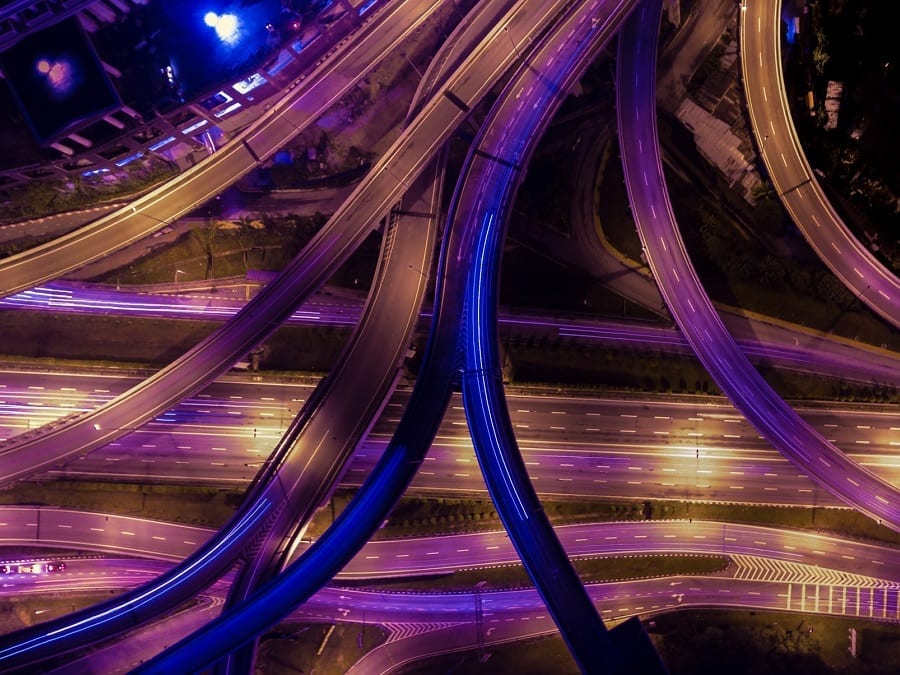Contents
One way to trade using ADX is to wait for breakouts first before deciding to go long or short. EUR/CHF broke below the bottom of the range and went on a strong downtrend. When you’re using the ADX indicator, keep an eye on the 20 and 40 as key levels. Because of that, ADX is typically used to identify whether the market is ranging or starting a new trend. When the ADX has risen above 50, this indicates that the price has picked up momentum in one direction. Request the Ultimate Double Top/Bottom Indicator which is used by 10,000+ traders.
This can present different opportunities, such as an iron condor options spread, in which the trader profits from sideways movement. Moreover, it shows when the price has broken out of a range with sufficient force to use a trend-trading strategy. Furthermore, it alerts traders to changes in trend momentum, which allows them to address risk management. It is best not to let ADX become a stranger if you want this trend to remain your friend. The ADX calculation and formula are difficult across all technical analysis indicators and demonstrate the tool creator’s ability. It is difficult because first, it requires calculating the Positive Directional Index and Negative Directional Index.
ADX tells traders whether the bulls or the bears are in control on the market. The ADX is derived from two indicators known as the Positive Directional Movement Indicator (+DMI) and the Negative Directional Movement Indicator (-DMI). This chart displays an ADX value that is below 20, yet the stock was in a tight range, which is perfect for range traders.

In a range, the trend is sideways, and there is a general price agreement between the buyers and sellers. ADX will meander sideways under 25 until the balance of supply and demand changes again. The direction of the ADX line is important for reading trend strength.
Paper Trading on Streak
Because the ADX measures the intensity of the trend the RSI can help with entries and exits by giving a time based component to the trend. A simple and effective strategy that is used by many traders is a crossover strategy that uses the ADX in combination with the +DMI and –DMI lines. In this trading strategy an order is placed whenever the +DMI and –DMI lines cross, as long as the ADX is also above 25, indicating a strong trend. When the +DMI line crosses higher it is a buy signal and when the –DMI crosses higher it is a sell signal. An uptrend is in place when the +DI is above the -DI; whereas a downtrend is in place when -DI is above the +DI.

The DI- is calculated as the current low minus the previous low. When this value is greater than the previous high minus the current high, the DI- index moves higher. The DI+ is calculated as the current high minus the previous high. When this is greater than the previous low minus the current low, the DI+ moves higher.
Simple Strategies for Trading with the Chaikin Money Flow Indicator
For example, when ADX rises from below 25 to above 25, the price is strong enough to continue in the breakout direction. Generally, ADX peaks above 25 are considered solid, even if they are lower. In an uptrend, the price can still rise on a falling ADX momentum because overhead supply is used up as the trend progresses. Any time the trend changes character, it is time to assess and/or manage risk. Divergence can lead to trend continuation, consolidation, correction, or reversal. For negative or minus DI, the difference between the previous low and current low must be positive.
In range conditions, trend-trading strategies are not appropriate. However, trades can be made on reversals at support and resistance . The strength of the trend is visualized by the rise of the positive directional indicator (+DI).
That’s not all – you should keep an eye on where both lines are compared to each other. If the +DI floats above the –DI, the market is usually in an uptrend. Traders use the lines and the relation between them to decide whether they should go long, short or avoid trading altogether. Even though breakouts are not hard to spot, they often fail to progress or end up being a trap. Yet, the ADX can tell you if they’re valid by showing when ADX is sufficiently strong for the price to trend following the breakout. Breakouts happen when an asset’s price has sudden momentum, generally due to increased supply and demand.
Therefore, it can be combined along with momentum indicators such as the Stochastics indicator. The difference here is that the Stochastics indicator can depict overbought and oversold conditions in the market. In the subsequent uptrend that followed, the ADX indicator started to rise above 20 or 25 level. This indicates that the uptrend (where DI+ is greater than DI-) was strong. This phase and the initial phase are seen to be the strongest areas when both the markets were rising and falling. The first chart below shows a comparison between the moving average and the average directional index indicator.
- Notice how the ADX is still above 20, which implies a trending move.
- Also plotted as a single line with values ranging from zero to 100.
- The price strength is muscular enough for a trend when it reaches or exceeds 25.
- Average Directional Movement Index is a non-directional indicator used to measure trends regardless of price direction.
Usually during this sideways period of consolidation, you can expect the ADX line to hover near the 20 level. The area marked by the rectangular box shows the ideal conditions. This was reflected by the Stochastics indicator showing somewhat oversold conditions. But one question that it does not address is whether the overbought or oversold conditions will lead to a build up of momentum. In other words, there is no telling whether the turning points in price will lead to a sustained move.
Overbought stocks’ prices tend to drop, and oversold stocks start to go up. If a price continues its direction even after hitting such a threshold, it may be in a highly trending market. Here, you can confirm the trend strength with the ADX indicator before making your move. For trend traders, it is essential to get the trade right. Timing is an important factor and this is where the ADX indicator can be put to good use.
You can use the ADX on all time frames and in many different markets including Forex, Stocks and Cryptocurrencies. After all these steps, it is time to calculate the Average Directional Index line. Subsequent ADX values are smoothed by multiplying the previous 14-day ADX value by 13, adding the most recent DX value and dividing this total by 14.
To make the most of it, make sure to apply it cautiously and double-check its signals on multiple time frames. The ADX has been proving its efficiency for over four decades already. However, like any other indicator, the ADX isn’t perfect, and it doesn’t fit all market conditions. That is why it is essential to get familiar with its drawdowns and benefits before deciding whether it can help improve the efficiency of your trading strategy.
Being able to identify when a trends momentum is strong or is increasing gives you a larger chance of making profitable trend trades. When you have the ADX plotted on your chart you will see one main reading that moves higher and lower. This visually shows you the peaks and troughs of the trends momentum. What this means is simple – ADX won’t give you real-time trend strengths. RSI is a momentum indicator that shows overbought and oversold levels. A reading above 80 is considered overbought, whereas below 20 is oversold in RSI.
The chart above shows four calculation examples for directional movement. The first pairing shows a big positive difference between the highs for a strong Plus Directional Movement (+DM). The second pairing shows an outside day with Minus Directional Movement (-DM) getting the edge.
Parabolic SAR (PSAR): Definition & Calculation
Yet, it is always good to be familiar with the formula that generates the tool you rely on to earn profits. Usually it is smoothed version of the ADX and most suitable on longer timeframes. Wait for the blue line of the 100Pips Momentum indicator cross the red line, if this pattern shows up, then exit or take profit accordingly. Investopedia requires writers to use primary sources to support their work.
Part of what makes the Pivots Points so reliable is the fact that they are based purely on price. Pivot Points indicator is one of the most accurate leading indicators which offer excellent support/resistance levels. If you have a full time job or don’t like average directional index strategy spending all day in front of charts, the ADX can also assist you if you prefer swing trading or position trading. When you see the ADX below 20 level, you must ignore all the signals. This is just noise, and we are not interested in trading false signals.

What makes this different from directional movement index? Also there is the final analysis to determine whether a strong trend hasn’t been established at… The ADX is an oscillating indicator, displayed as a single line, ranging from 0 to https://1investing.in/ 100. The ADX only indicates the strength of the trend and does not indicate its direction. In other words, the ADX is non-directional, meaning that it measures the strength of a trend, but doesn’t distinguish between uptrends and downtrends.
Average Directional Index
When +DI and -DI crosses, it indicates that a trend reversal is occurring. The trend is turning bullish if +DI is crossing above -DI; similarly, the trend is turning bearish if -DI is crossing above +DI. It will be a case of a particularly strong trend if a cross occurs when the ADX line is also going up. ADX calculations are based on a moving average of price range expansion over a given period of time. The default setting is 14 bars, although other time periods can be used. Let me illustrate the inherent characteristic of the ADX with a simple analogy from our daily lives.
Designed by Welles Wilder for commodity daily charts, the ADX is now used in several markets by technical traders to judge the strength of a trend. You will see that the ADX eliminates the need for having to use the moving average indicator as a trend indicator. Because prices tend to gravitate to and from the moving average, you can expect some reaction when this happens. As we mentioned earlier in the article, the ADX is basically a trend strength indicator. Therefore, it makes sense to use the indicator as a way to ascertain the trend and the strength. The strength of the trend is seen by the ADX line itself.

